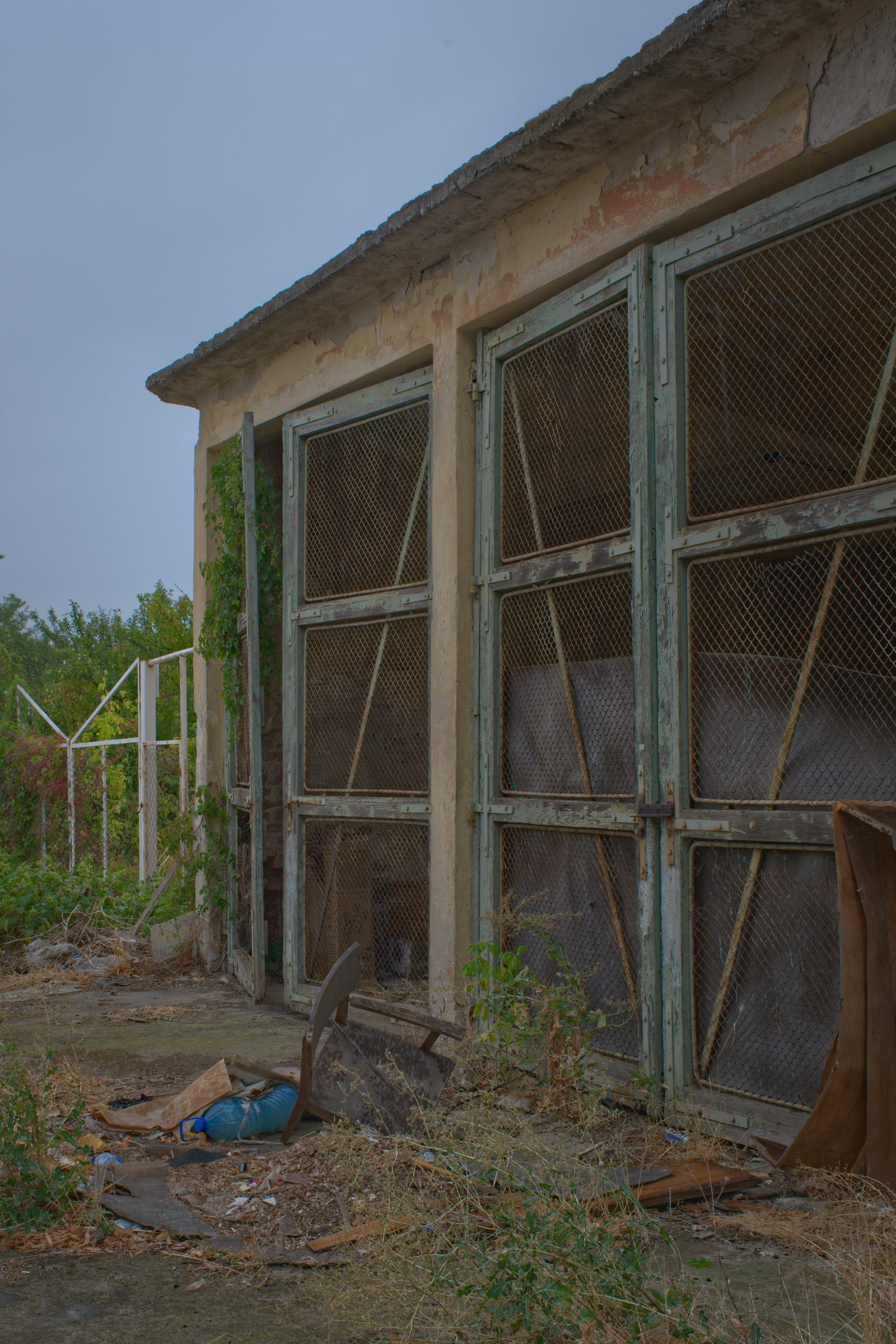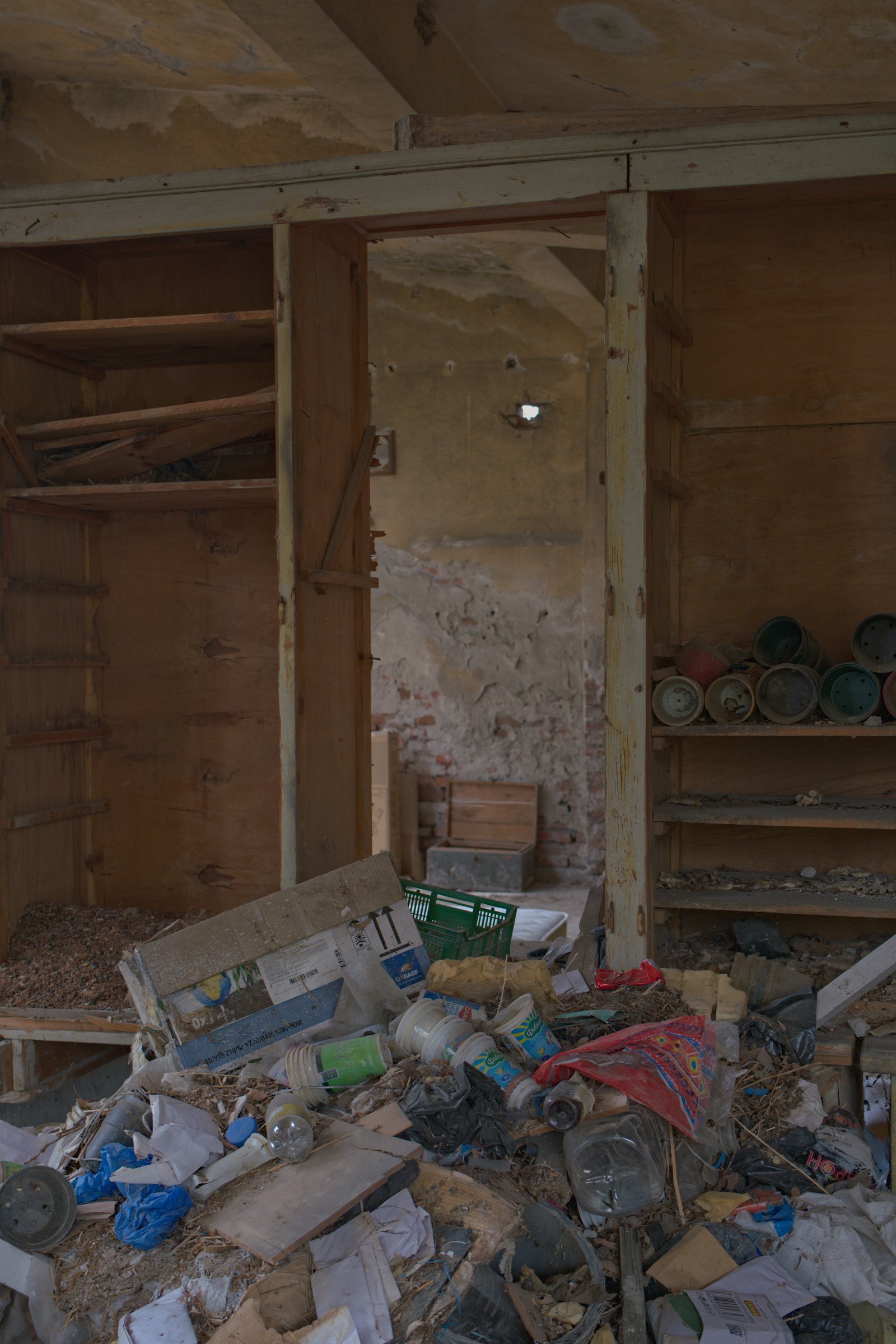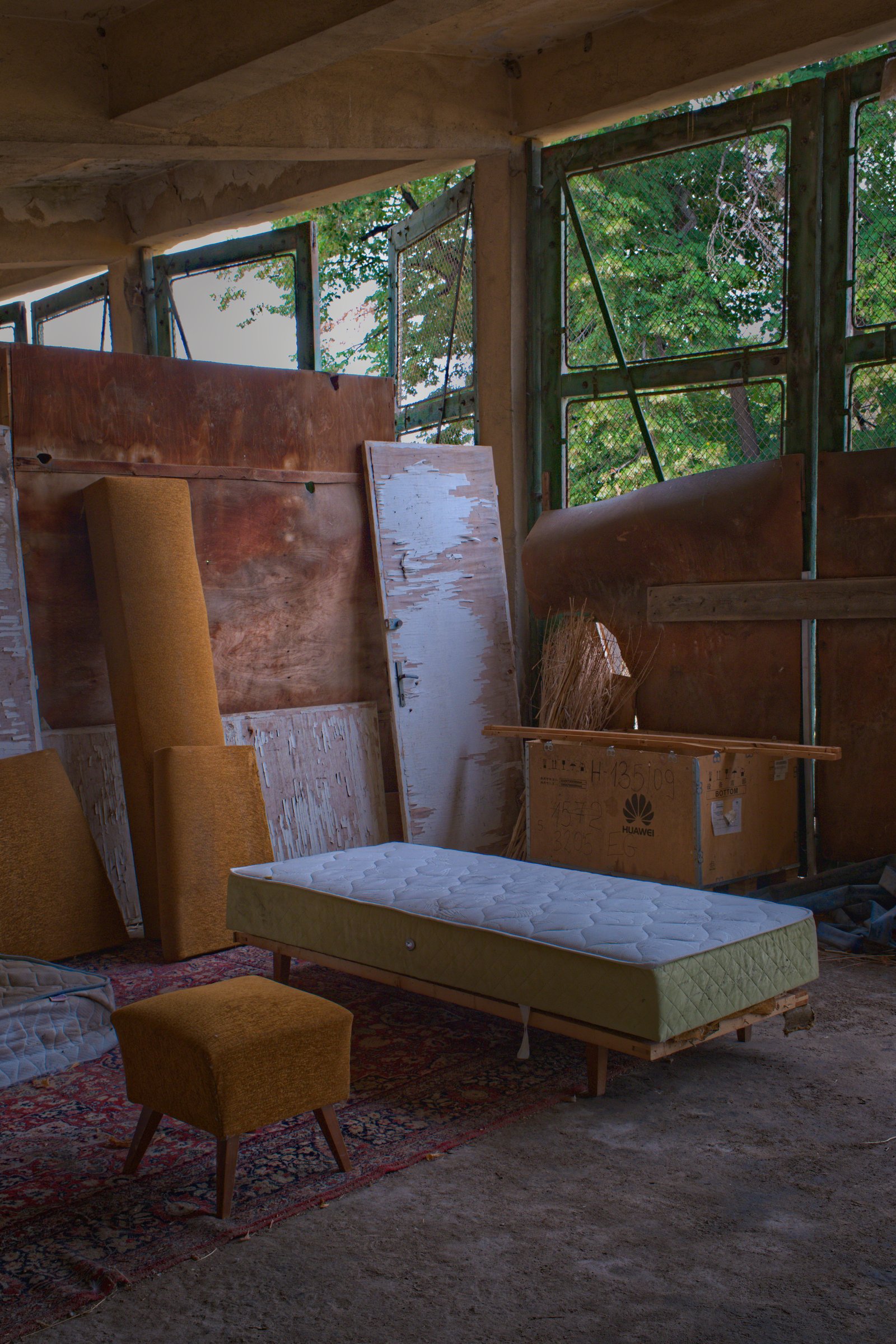Reality in the second degree?
photography—the cumulative de-creation of the past (in the very act of preserving it), the fabrication of a new, parallel reality that makes the past immediate while underscoring its comic or tragic ineffectuality, that invests the specificity of the past with an unlimited irony, that transforms the present into the past and the past into pastness.

Meyerowitz calls it “searching for your identity on the street […] [to be] shocked by something in front of you that manifests itself out of the chaos of everyday reality”1, the “a ha!”, the moment of inspiration.
Walking beside the railway tracks on my way out of Plovdiv I spy a tatty, disused set of sheds, probably at one time having had something to do with the railway but now crumbling, rusting, gradually succumbing to nature’s entropy. Each shed filled with trash and debris, dead animals, and the leavings of living ones — all except the last.

Inside the furthest one a surprise, a scene of unexpected domesticity. The floor cleared and swept, a large Turkish style carpet covers one half of it, and atop that a bed, a bare mattress, a mid-century Ottoman footstool, a wardrobe with a missing door. Old wooden chests line the walls, balancing the spartan space. Cracked plaster and pale, peeling, yellow paint reveal the brickwork beneath. Light floods in, even on this overcast day, through massive meshed doors. Once inside, a high sloping ceiling latticed with concrete beams draws the eye through those doors.
Looking outward gives the impression of an animal enclosure, furnished cage, a cell; looking inward suggests something more surreal. Taken together, everything present and everything missing, an incongruous delight.
I move the Ottoman and then immediately move it back, remind myself that this may still be someone’s space, that even though there is a film of dust on everything that suggests a long absence, they could return at any time. I wonder at the person (or people, there’s a second mattress) who occupied this space. Do they still? Do they consider themselves homeless? Where are they now? Do they know the man I bought food for this morning, and who’s photo I took? Or is it him who lives here? Unlikely, but the thought comes. A world apart, the chosen homelessness of this walk against the involuntary homelessness lived by so many2.
I could live here for months. I imagine myself at work here, picture a desk in the unused half of the space, a workshop even, imagine venturing out into the city with this as a base. Stocking it with a few days of food and water, feeling energised by the fragility of the arrangement — as in my extended trespasses in Sarajevo, Prizren, Berat, Himarë, Thessaloniki, Sandanski et al. Knowing that I might return and find all my things gone, fantasizing about what I would do then. Wander on without? In anger or relief? Feeling robbed or unburdened?
Is that wish to build my own home one day at odds with my desire to occupy these derelict spaces? Because what decay has created here cannot simply be rebuilt elsewhere. This space is emergent, borne of a collaboration between human need and nature’s decay, with most of the credit owing to decay. The furnishings, scavenged and laid on this brick and mortar canvas of faded purpose, create a beauty that is ’tymeful’, ephemeral. To try and recreate this would destroy all that it is — akin to pre-ripped jeans — a hollowing out of an aesthetic, the post-modern revelation that even decay can be sullied, spoilt by our desire to preserve.
But is it enough simply to have seen it?
Beauty of every sort seems to call out to be added to the “duplicate world”, that “reality in the second degree”3, the parallel world that exists in photographs, and disavows the existence of anything that is not yet a photograph as well as everything that never can be.

Still, looking at these photographs reveals nothing of what finding this space — on this wet and dreary day, during this bout of uninspiration — has meant to me. Like the map which “appears to us more real than the land”4, the photographs superimposition of visible beauty over all else wreaks a kind of destruction on the world, erases parts of our experience, weakens our grip on reality.
So successful has been the camera’s role in beautifying the world that photographs, rather than the world, have become the standard of the beautiful.
[…] Freed from the necessity of having to make narrow choices (as painters did) about what images were worth contemplating, because of the rapidity with which cameras recorded anything, photographers made seeing into a new kind of project: as if seeing itself, pursued with sufficient avidity and single-mindedness, could indeed reconcile the claims of truth and the need to find the world beautiful.
— Susan Sontag
Perhaps my memory of this place is confined rather than enriched by these photographs.
-
Joel Meyerowitz, interviewed by Matthew Beaman for The Big Interview↩︎
-
If you’re interested in a glimpse into some experiences of real homelessness, I recommend reading It’s Like I Drew a Door and Disappeared Through It by Irina Kravtsova↩︎
-
Susan Sontag, On Photography, 1977↩︎